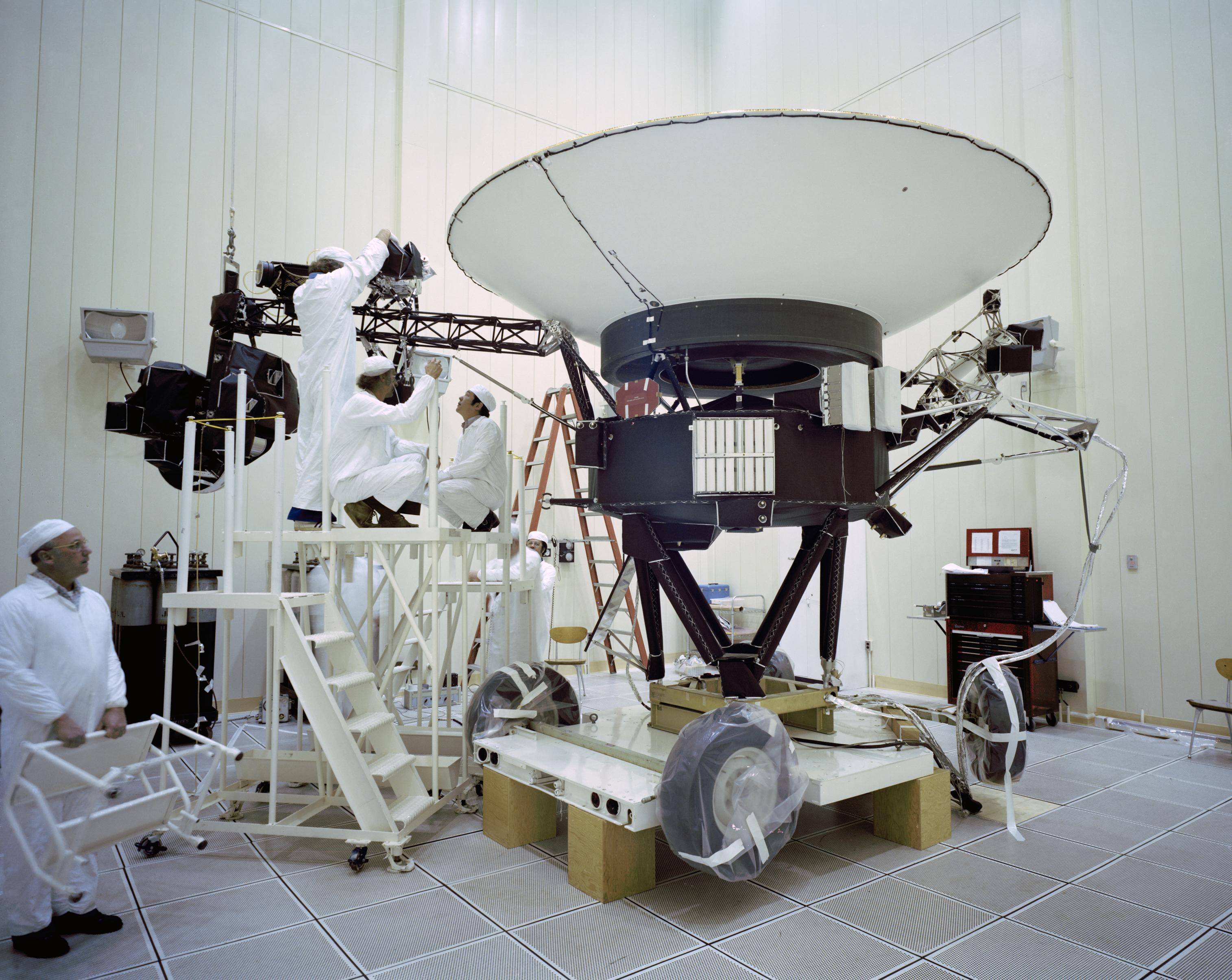On August 20, 1977, Voyager 2 was launched into space. Its twin, Voyager 1, would be launched 16 days later. Together, they’d bring a new understanding of the gas giant planets in the Solar system and would become the first human-made objects to leave the heliosphere behind and enter interstellar space. Forty-Five years on, the Voyager program is NASA’s longest-lived mission, a testament to the spirit of exploration, and an extraordinary scientific and technical success.
The tech part of the mission is one of the most mind-blowing aspects when we think about it. The technology on the Voyager probes is ancient. They record data on an eight-track tape player. The amount of memory they can store is about 3 million times less than your standard modern cellphones. And, speaking of cell phones, you can forget good signal in interstellar space: The spacecraft transmit data roughly 38,000 times slower than 5G.
That connection comes via NASA’s Deep Space Network and Voyager 2 can only be contacted from an antenna outside Canberra in Australia. There was a bit of apprehension when, in 2020, the antenna had to be off for many months to get refurbished, but the spacecraft was there to say hello again once contact was re-established.
“Today, as both Voyagers explore interstellar space, they are providing humanity with observations of uncharted territory,” Linda Spilker, Voyager’s deputy project scientist at NASA’s Jet Propulsion Laboratory (JPL), said in a statement. “This is the first time we’ve been able to directly study how a star, our Sun, interacts with the particles and magnetic fields outside our heliosphere, helping scientists understand the local neighborhood between the stars, upending some of the theories about this region, and providing key information for future missions.”

Engineers working on NASA’s Voyager 2 spacecraft on March 23, 1977, a few months before launch. Image Credit: NASA
Voyager 1 is currently 23.5 billion kilometers (14.6 billion miles) from Earth. Voyager 2, despite launching earlier, was on a longer and slower orbit that allowed it to visit Uranus and Neptune, so it is a bit behind, currently at 19.5 billion kilometers (12.1 billion miles) from Earth. It is truly extraordinary how the two spacecraft continue to do cutting-edge science.
“The heliophysics mission fleet provides invaluable insights into our Sun, from understanding the corona or the outermost part of the Sun’s atmosphere, to examining the Sun’s impacts throughout the solar system, including here on Earth, in our atmosphere, and on into interstellar space,” added Nicola Fox, director of the Heliophysics Division at NASA Headquarters in Washington.
“Over the last 45 years, the Voyager missions have been integral in providing this knowledge and have helped change our understanding of the Sun and its influence in ways no other spacecraft can.”
Many of the onboard systems had to be switched off as the nuclear power of the spacecraft is steadily reducing, but as long as it keeps on the essential stuff on, the mission will continue. The spacecraft each carry a Golden Record, which includes images and natural sounds from Earth as well as music.
“The Voyagers have continued to make amazing discoveries, inspiring a new generation of scientists and engineers,” said Suzanne Dodd, project manager for Voyager at JPL. “We don’t know how long the mission will continue, but we can be sure that the spacecraft will provide even more scientific surprises as they travel farther away from the Earth.”
Source Link: Voyager 2 Celebrates 45 Years Exploring Edge Of Solar System And Beyond